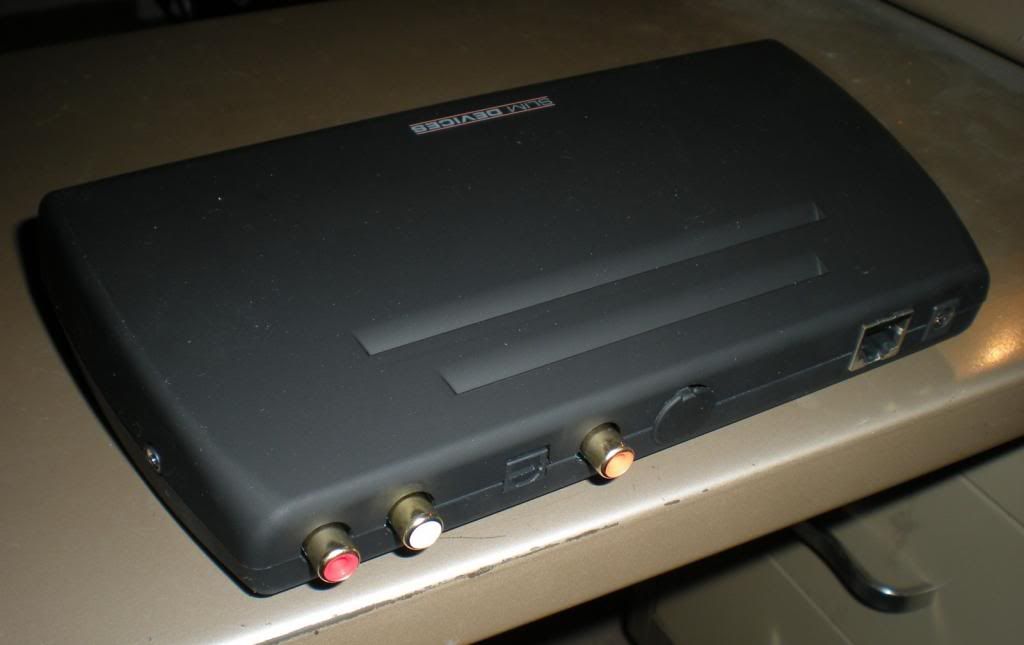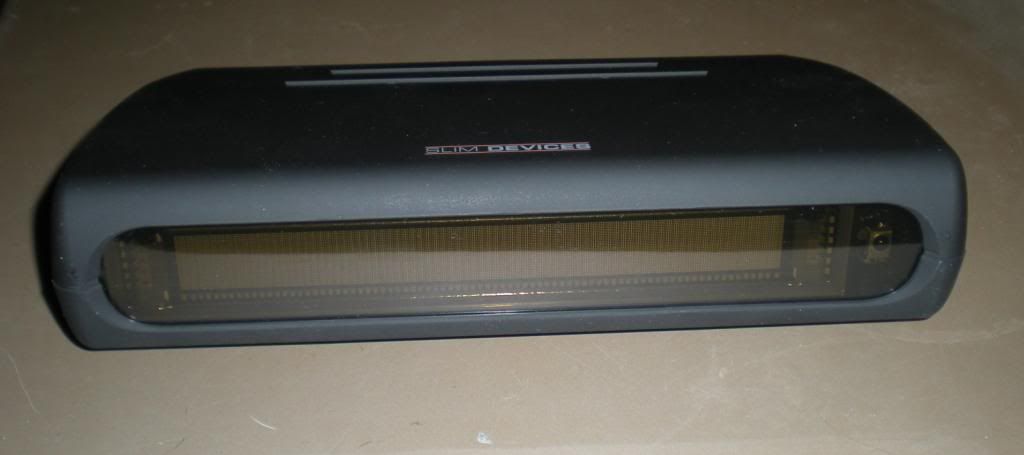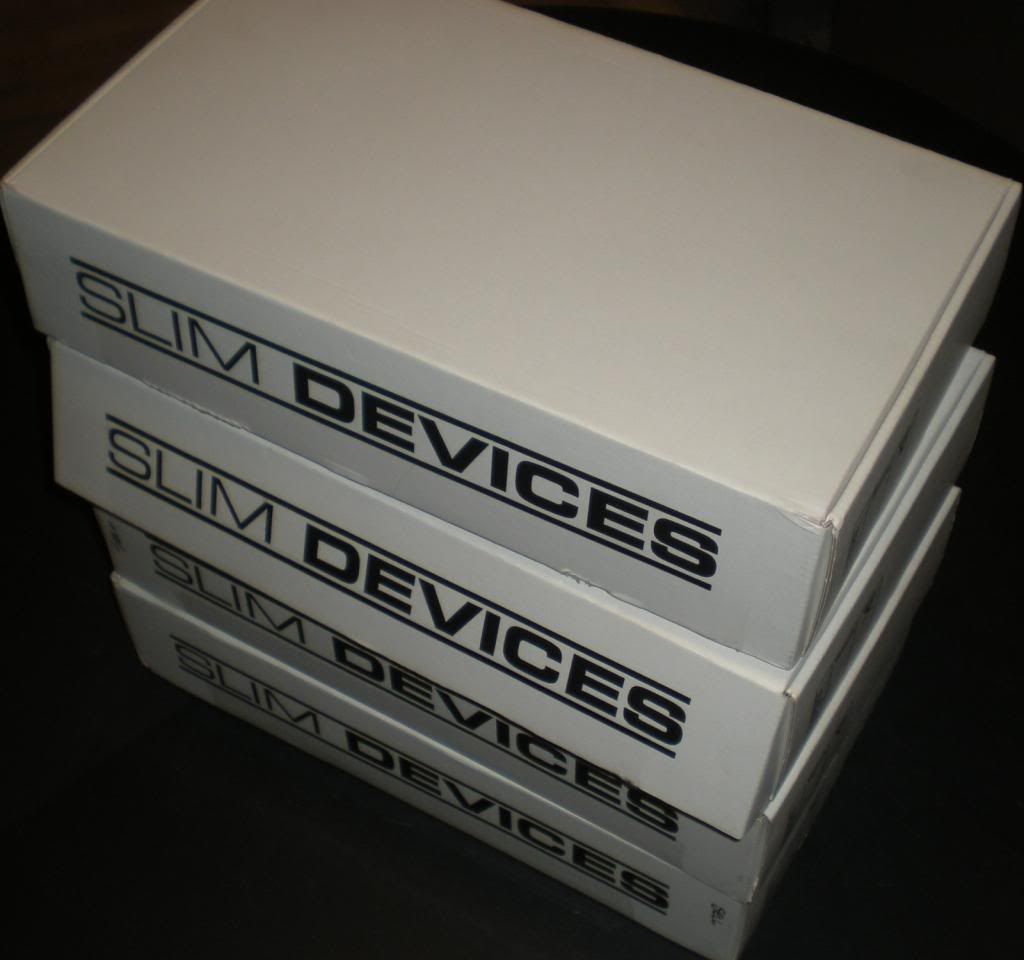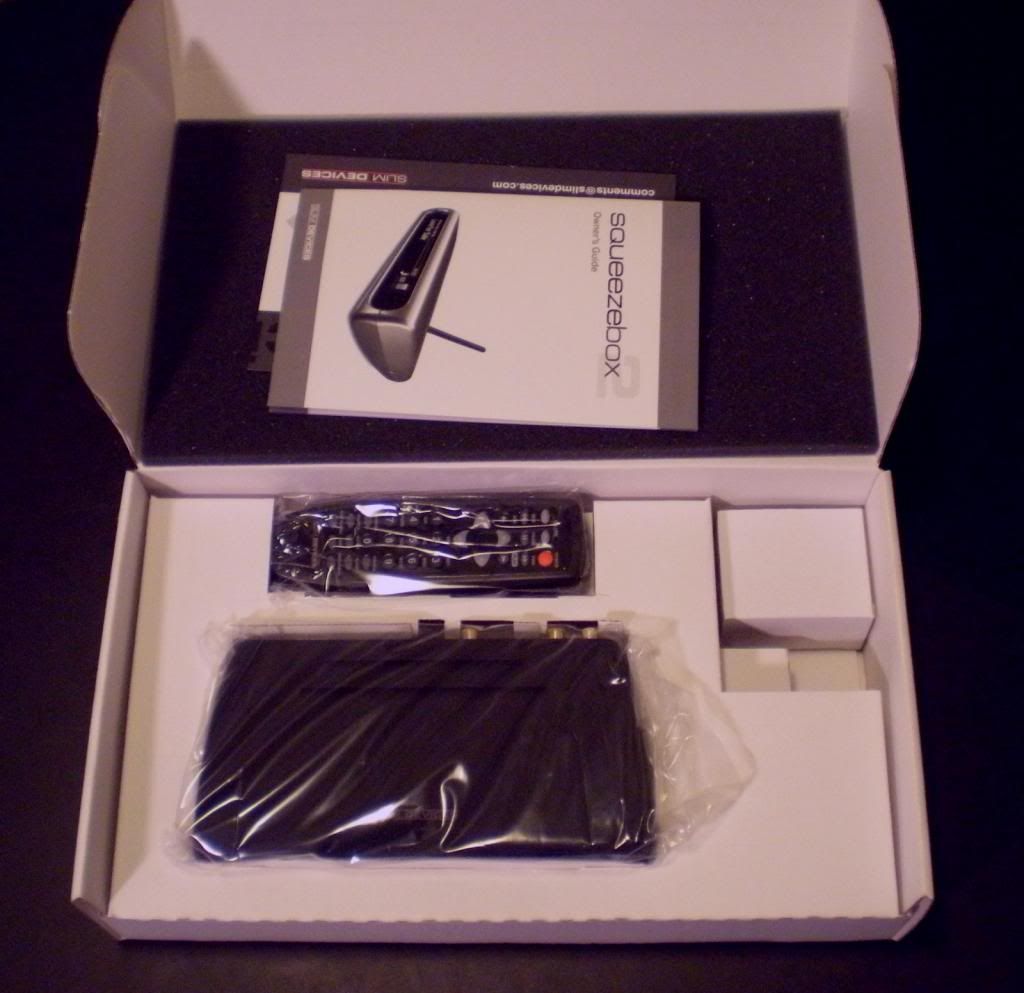 |
| Slim Devices Squeezebox 2, with a Squeezebox 3 on the left. |
You want a cheap ($100-$300) network audio player. Something to stream your music collection from you computer to your home theater or bedroom. Do some comparative research and you'll find that if you care about sound quality, you want a Squeezebox. And if you want a Squeezebox, you want a Squeebox 2 or 3.
Why you want a Squeezebox:
1- The quality of the Squeezebox audio components is superior to any device in this price range. Specifically is has better components than Roku players, or even the newer Logitech players. In geek-speak, it uses a Burr-Brown digital/analog converter, which is still found in many premium home theater receivers.
2- Squeezebox does not exclude any file types just because they are Apple or Microsoft specific. It is file format neutral, with no stake in proprietary music file types. Play your iTune library (except of course Apple DRM files), Windows Media files, open source formats, uncompressed WAV, high resolution recording studio formats, etc.
 |
Connections: Headphones (on the side), analog L/R, digital
optical, and digital coax outputs. Ethernet. 5v DC power. |
 |
| Squeezebox 2 front. |
3- FLAC files are supported, which let you hear exactly what you would from the source CD. Artists that really care about quality are now releasing music in FLAC downloads, like
David Byrne,
Nine Inch Nails,
Ultimae Records, and thousands more found at high quality online music shops like
Bandcamp.com. Geek-speak: When FLAC (
Free Lossless Audio Compression) is played it decompresses to the exact same digital stream as the source CD or WAV file, unlike MP3 or other lossy compression methods. It will play MP3 of course. (If you can't hear the difference or don't care about sound quality, FLAC or a Squeezbox are not a benefit to you. Just continue using your iPod dock.) FLAC can easily be converted to other formats for use on portable or automotive players than may only support MP3 or have limited storage capacity.
 |
| Original Squeezebox 2 packaging. |
4- With Squeezeboxes, the information about your files, songs, albums etc, is all associated with the files themselves, and not with any specific application like iTunes or Windows Media Player. That means your collection and data are portable and independent; Usable with any software or device you choose (as long as that software or device supports your chosen file format). This feature becomes more critical the larger your collection or more detailed your music data gets. You are a serious music nerd, right?
Why you want a Squeezebox 2 or 3:
 |
| Squeezebox 2 open package. |
1- Squeezebox 2 and 3 are the best versions. (Actually the Squeezebox Transporter is the best, but is a much more expensive device.) Older versions were more primitive and lacked some key features. Later, while the Squeezebox 3 and Transporter were in production, Logitech bought Slim Devices. All of the players Logitech designed following the Squeezebox 3 (or Squeezbox Classic as they renamed it), like the Squeezebox Touch, Boom, or Duet, use a cheaper digital and analog components that are measurably, if not audibly lesser sound quality.
2- The Squeezebox 2 and 3 process FLAC "on board". The Original Squeezebox and many other modern players support FLAC, but most process FLAC at the server then stream uncompressed digits to the player. Processing FLAC on board reduces network utilization required to play high quality audio. It also reduces the processing load on your media server, but only slightly. FLAC decompression is not intense.
 |
Contents: Squeezebox 2, remote, power supply, user
guide, server download sheet, Ethernet cable, RCA cables. |
Is Squeezebox 3 better than 2?
1- The Squeezebox 2 and 3 do not differ in audio hardware, and have the same display. They should sound identical placed in identical environments.
2- They have different cases. It would be hard to argue the digital alarm clock shape of the 2 is as good as the 3's elegant, upright slab. Do you like "retro"?
3- Later versions of Squeezebox 3 had a nicer remote. It is larger and easier to grip, has an improved layout, and the buttons are back-lit. The remotes are interchangeable.
 |
The best way to distinguish a
Squeezebox 2 from an original
Squeezebox is the model label. |
4- In wireless models, Squeezebox 3 has a superior wireless adapter and antenna, though they are both 802.11g. Personally this has little significance. With all the WiFi traffic to laptops, phones, and tablets in my house, traffic is bound to occasionally interrupt music playback. It's rare, but extremely annoying to me, so I run Ethernet to all but one of my players. If you must, adding (or replacing) a wireless adapter to a Squeezebox is nearly as easy as adding a wireless adapter to a laptop.
Now that the Squeezebox Classic is out of production, prices for used units are going up to near original retail prices; Even higher for unused units. There is no low cost, audiophile quality device that has replaced the Squeezebox. You can spend $500 - $2000 and still not improve on a Squeezbox 2 or 3. (If you have that money, get a Squeezebox Transporter!)
 |
| Squeezebox 2 documents. |
I have been a Squeezebox user since the first version came out in 2003, and have owned several of the three versions. I currently own and use Squeezbox 3 players in my home and garage.
I was fortunate to recently acquire a small supply of Slim Devices Squeezebox 2 wired players. I will use some, but even if I keep a spare, I have more than I need.







